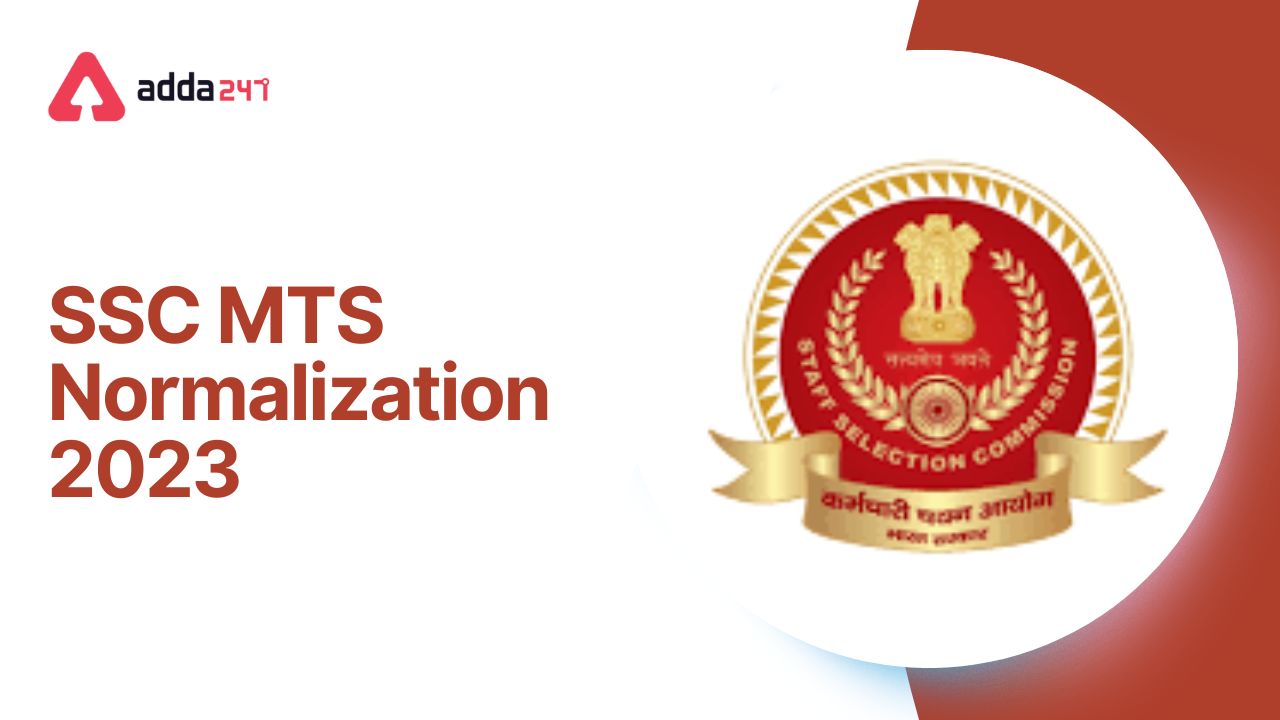Table of Contents
SSC MTS Normalization 2023
The SSC MTS Normalization 2023 is going to be covered on this page as one part of the scoring scheme. SSC MTS Pre Exam 2023 was held from 1st September to 14th September 2023, in several shifts all over the nation by the Staff Selection Commission (SSC). Normalization is a technique that SSC uses to correct the exam results of applicants who took the test in several sessions or shifts. Because of this, scores are equivalent. This article will provide details on the SSC MTS Normalization 2023. We are also responding to important questions. Does Accuracy Matter in SSC MTS Normalization? Let’s examine what that is and the situations when it is applied.
SSC MTS Normalization 2023: What Is The Normalization
Candidates must understand what normalization in SSC is before they start learning about SSC MTS Normalization 2023. The word “normalization” may have come up on numerous exams taken by applicants for government posts. The Staff Selection Commission normalizes the test results of the applicants for the multi-shift exams to account for any changes in the difficulty levels of the question papers across various shifts. Applicants who took the test numerous times had their results adjusted based on the test’s degree of difficulty. In the article below, SSC MTS Normalization 2023 has been covered.
Normalization In SSC MTS Exam 2023: Normalization Formula
SSC uses the SSC MTS Normalization 2023 normalization model to calculate a candidate’s final score based on the difficulty of the shift. The average marks attained during a particular shift form the basis of the calculation used to calculate the difficulty level. So the average aptitude of the exam takers is the same across all shifts.
This is possible because so many candidates show up for each shift of the SSC exams. Another benefit is that the way shifts are assigned is random.
SSC Uses The Following Normalizing Formula For SSC MTS Normalization 2023:

- 𝑴𝒊𝒋 = Normalized marks of the jth candidate in the ith shift.
- 𝑴𝒕𝒈= is the average mark of the top 0.1% of the candidates considering all shifts.
- 𝑴𝒒𝒈= is the sum of the mean and standard deviation marks of the candidates in the examination considering all shifts.
- 𝑴𝒕𝒊= is the average mark of the top 0.1% of the candidates in the ith shift.
- 𝑴𝒊𝒒= is the sum of mean marks and standard deviation of the ith shift.
- 𝑴𝒊𝒋= is the actual marks that the jth candidate obtained in the ith shift.
- 𝑴gm𝒒= is the sum of the mean marks of candidates in the shift having maximum mean and standard deviation of marks of candidates in the examination considering all shifts.
How Does SSC MTS Normalization 2023 Work?
- The process of transforming values measured on several scales to a scale that is supposed to be universal is known as normalization in SSC MTS.
- It is done to evaluate the performance of the applicants based on comparable exam variables in order to modify the exam’s difficulty level for the different shifts.
- A lot of students from various shifts claimed that the questions had varying degrees of difficulty and that it was unfair to measure their performance because it was not their fault if they had lied on a certain shift.
- For instance, the second shift’s pupils were able to earn more than the first shift’s kids, whose average grades were 110 out of 200.
- The normalization process is now being used by SSC to address this problem.
- The SSC has stated unequivocally in all of its official announcements this time around that the candidates’ Tier 1 and Tier 2 scores will be adjusted.
- The normalization process, which is described above, employs a formula to determine the score. But everything is dependent on the commission and the calculations that it makes.
- As inputs, the scores of the applicants and the actual number of pertinent questions across the several shifts are employed. The process can be applied with various formulae.
Why Is SSC MTS Exam Normalization Important?
Normalization’s primary purpose is to compare exam takers’ performance on an equitable basis. By performing this, things like difficulty level won’t have an impact on the outcome. It is ensured by standardizing the shifts that applicants who receive difficult shifts won’t be at a disadvantage compared to those who received easy shifts. Knowing they won’t experience unreasonably difficult content greatly reduces students’ anxiety.



 IDBI Junior Assistant Manager Previous Y...
IDBI Junior Assistant Manager Previous Y...
 IDBI Junior Assistant Manager Syllabus 2...
IDBI Junior Assistant Manager Syllabus 2...
 IDBI Junior Assistant Manager Salary 202...
IDBI Junior Assistant Manager Salary 202...









